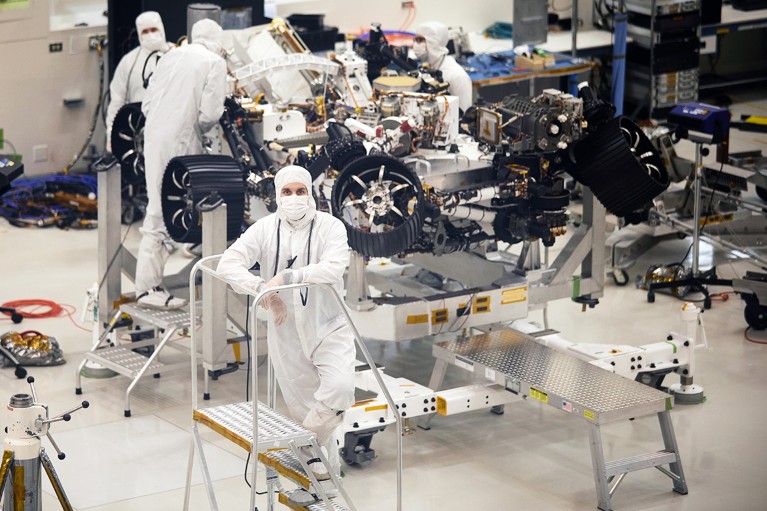They call me a mechatronics engineer — a hybrid between a roboticist and a mechanical engineer. In the Spacecraft Assembly Facility at the Jet Propulsion Laboratory (JPL) in Pasadena, California, we build and test spacecraft and rovers, the vehicles that can traverse the surface of a destination.
In February, we finished the main assembly of the Mars 2020 rover, Perseverance — due to launch this month or in August — whose mission is to seek signs of ancient life. What’s exciting about this rover is that it can take samples of Martian soil, analyse them and seal them in containers for a future mission to collect and bring back to Earth. The rover’s complex machinery can drill down to extract core samples 4–5 centimetres long, then bring them inside the rover to process and photograph.
On any mission, we try to ensure that no volatile chemicals, plastics or paints are deposited on sensitive surfaces such as optical lenses. We also take care to avoid contaminating the Mars surface with Earth organisms such as bacteria or spores, which could interfere with getting accurate results. We work in the giant ‘clean room’ seen here. Before entering, we put on full protective gear: little has changed at the JPL in that respect since the COVID-19 lockdown began.
With Mars 2020, we have to be even more careful because some of the samples collected will come back. When we’re working with equipment that will process soil cores, we wear an extra set of single-use, sterile gloves, and a sterile lab gown and goggles. A buddy hands me tools, anything I need, so that I don’t contaminate my gloves.
Since February, I’ve been based at the Kennedy Space Center in Cape Canaveral, Florida, helping to put the finishing touches to the rover.
As I ungown for the day, it’s nice to take a step back and think how we’ve sent rovers to other planets only a handful of times. It’s pretty monumental.


 Modelling Mars in a sandbox
Modelling Mars in a sandbox
 Life on a higher plane
Life on a higher plane






